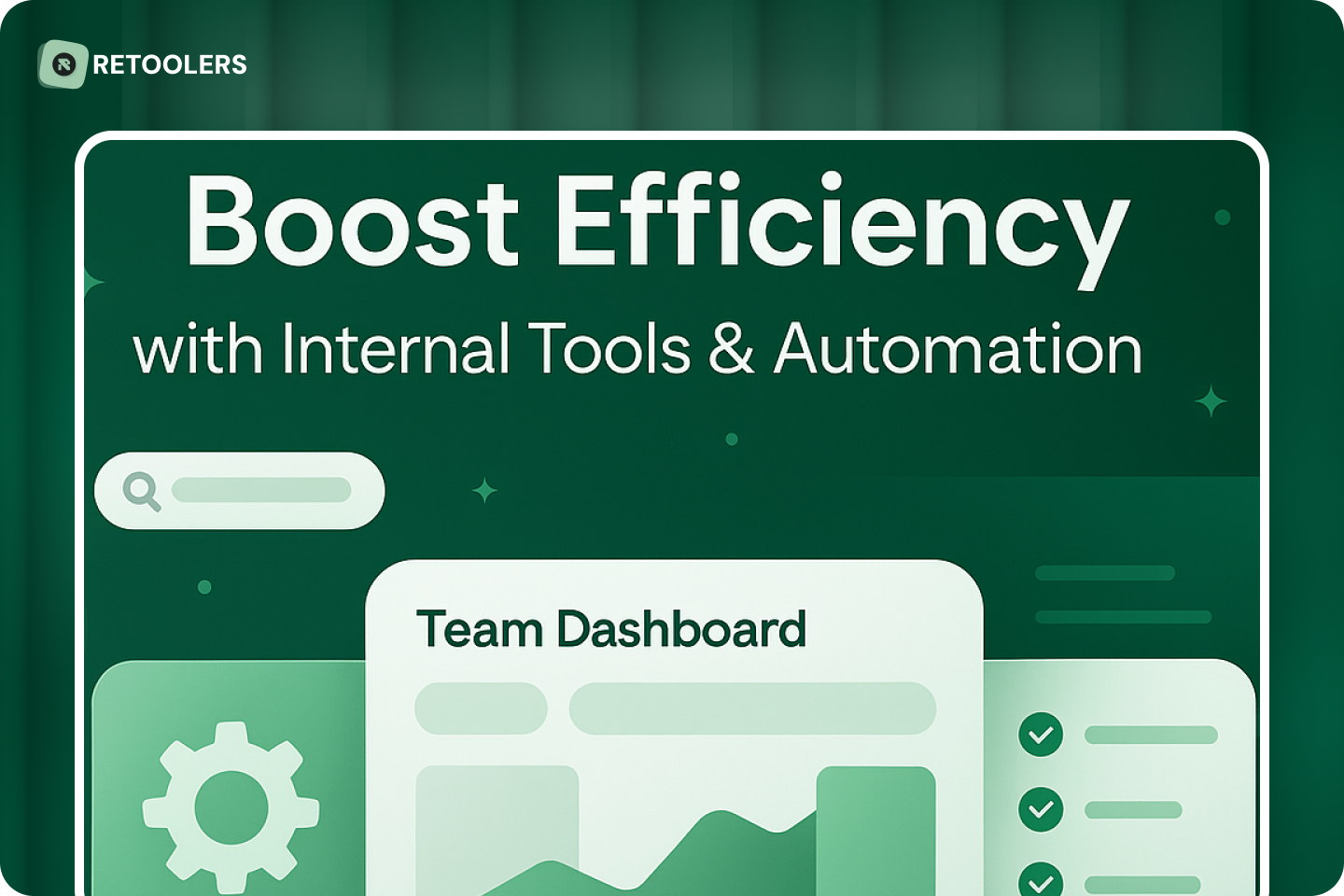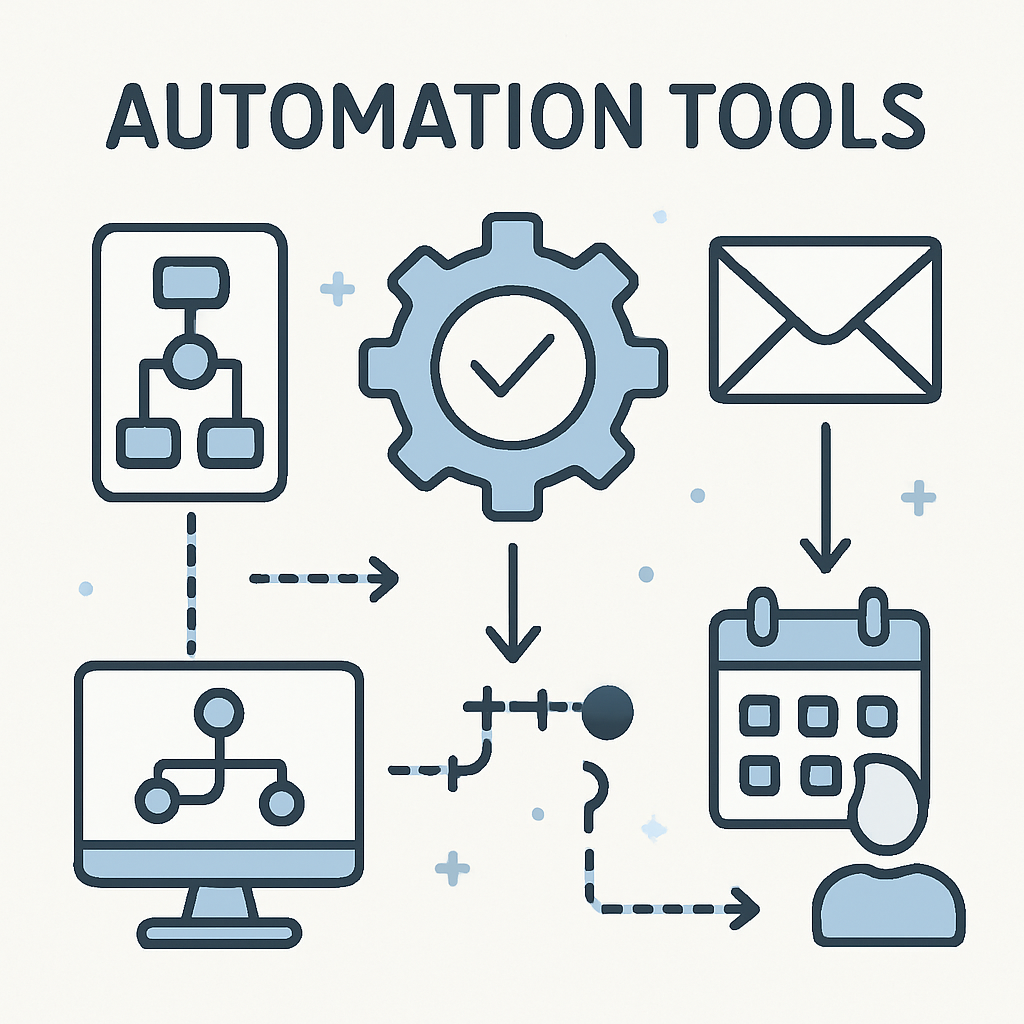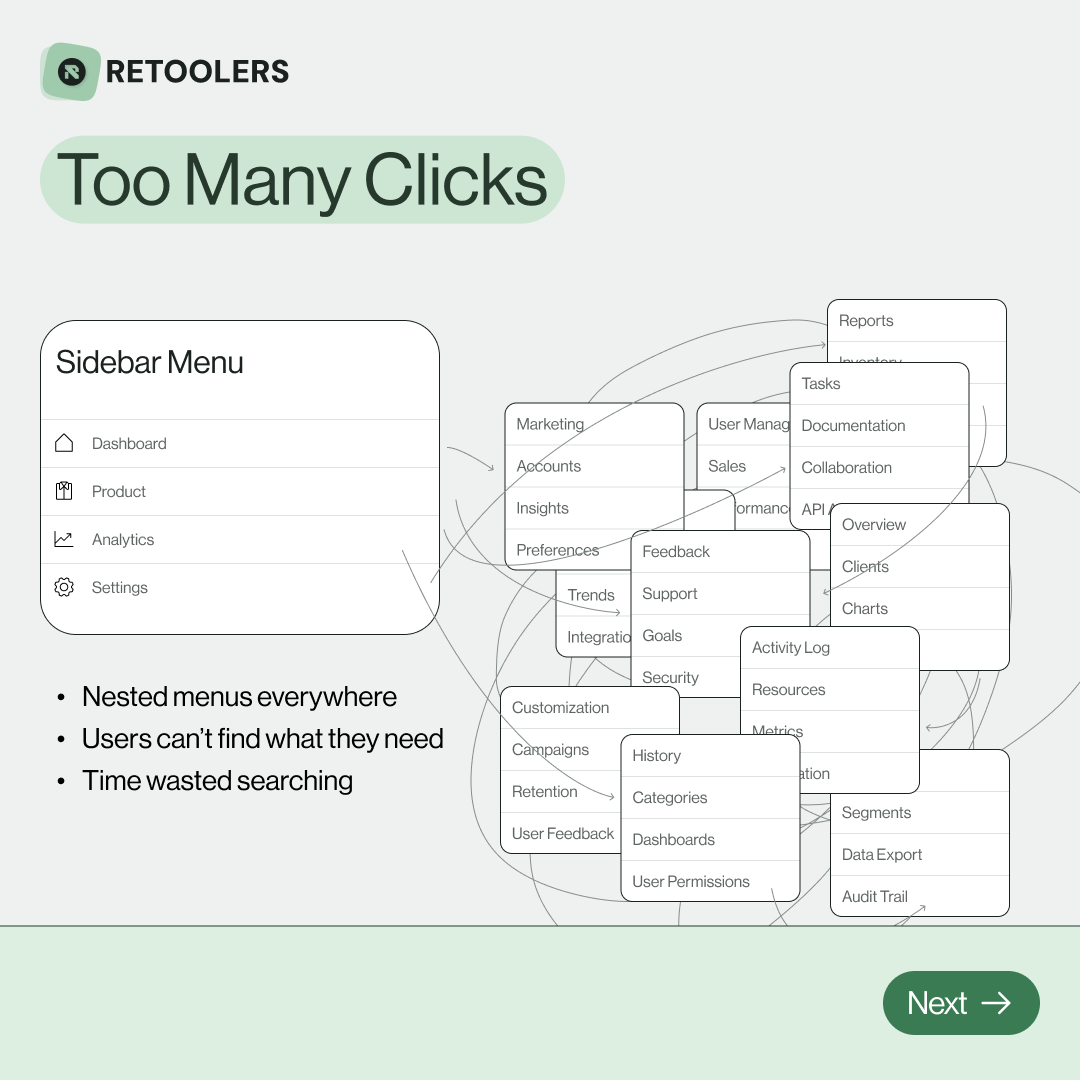Duy Vu
October 7, 2025
•
20 mins read

In the ever-evolving landscape of real estate, the need for efficient management of property leases and occupancy rates is paramount. By using advanced technology platforms like Retool, property managers can streamline operations, reduce errors, and ultimately increase profitability. Here’s a comprehensive look at how Retool can transform property management and lease administration. And achieve 97.3% occupancy and generate $725 million in revenue
Internal tools are software or systems developed to support the operations within a company, making processes smoother, faster, and more efficient. These tools can range from simple applications that automate routine tasks to complex systems that integrate multiple business functions. In this article, we'll explore how businesses can maximize efficiency with internal tools, focusing on business automation tools and internal communication tools. By understanding and implementing the right tools, organizations can harness the full potential of their workforce and resources.

Internal tools are essential for improving operational efficiency and productivity. They help automate routine tasks, facilitate communication, and provide insights into business operations. By implementing the right internal tools, companies can reduce manual work, minimize errors, and save time. These tools not only enhance day-to-day operations but also empower employees to focus on high-value tasks that drive growth and innovation.
Operational efficiency is all about doing more with less. Internal tools help streamline processes, allowing employees to focus on tasks that require human intervention. By automating repetitive tasks, internal tools free up time for more strategic activities, ultimately improving productivity and efficiency. Moreover, these tools enable businesses to standardize processes across departments, ensuring consistency and reducing the likelihood of errors. The result is a more agile organization that can adapt quickly to changes in the market.
Internal tools align with business goals by providing the necessary support for various operations. Whether it's managing projects, tracking inventory, or analyzing data, internal tools ensure that these tasks are completed efficiently and accurately. This alignment helps businesses achieve their strategic objectives and maintain a competitive edge. By leveraging data and insights generated by these tools, companies can make informed decisions that drive growth and innovation. Additionally, well-integrated internal tools can foster a culture of continuous improvement, where employees are encouraged to find new ways to enhance processes and outcomes.
Business automation tools are designed to automate routine business processes, reducing the need for manual intervention. These tools not only increase efficiency but also allow businesses to scale operations without a proportional increase in resources. By automating mundane tasks, companies can focus on strategic initiatives that drive revenue and customer satisfaction.
There are several types of business automation tools, each serving a different purpose. Some common examples include:

Business automation tools offer several benefits, including:
Internal communication tools facilitate communication within an organization, ensuring that employees can easily share information and collaborate on projects. Effective communication is vital for fostering a collaborative work environment, driving innovation, and achieving business goals.
There are various types of internal communication tools, each serving a different purpose. Some common examples include:

by Merakist (https://unsplash.com/@merakist)
Internal communication tools offer several benefits, including:
Implementing internal tools requires careful planning and execution. Here are some steps to consider:
Before implementing internal tools, it's important to assess your business needs. Identify the areas where automation or improved communication could enhance efficiency and productivity. Understanding the specific challenges and opportunities within your organization will guide the selection and customization of the right tools.
Once you've identified your needs, research and select the right internal tools to meet those needs. Consider factors such as ease of use, integration capabilities, and cost. It's crucial to choose tools that can scale with your business and adapt to changing requirements, ensuring long-term value and impact.
Training employees on how to use internal tools is crucial for successful implementation. Ensure that employees understand how to use the tools effectively and provide ongoing support as needed. By fostering a learning culture and encouraging feedback, organizations can maximize the benefits of internal tools and drive continuous improvement.
After implementing internal tools, monitor their performance and make adjustments as needed. Continuously evaluate the effectiveness of the tools and seek feedback from employees to ensure they are meeting business needs. This proactive approach enables organizations to stay agile and responsive to changes, ensuring sustained efficiency and success.

Internal tools are essential for maximizing efficiency and productivity within an organization. By implementing business automation tools and internal communication tools, companies can streamline operations, improve collaboration, and achieve their strategic goals. These tools not only enhance current operations but also position businesses to thrive in an increasingly competitive and dynamic market.
By carefully assessing business needs, selecting the right tools, and providing adequate training, organizations can successfully integrate internal tools and enjoy the benefits they offer. As technology continues to evolve, it's crucial for businesses to stay informed about new tools and trends to remain competitive and efficient in today's fast-paced business environment. Embracing innovation and fostering a culture of continuous improvement will ensure that organizations remain agile and resilient, ready to seize new opportunities and overcome challenges.
Looking to supercharge your operations? We’re masters in Retool and experts at building internal tools, dashboards, admin panels, and portals that scale with your business. Let’s turn your ideas into powerful tools that drive real impact.
Curious how we’ve done it for others? Explore our Use Cases to see real-world examples, or check out Our Work to discover how we’ve helped teams like yours streamline operations and unlock growth.

🔎 Internal tools often fail because of one simple thing: Navigation.
Too many clicks, buried menus, lost users.
We broke it down in this 4-slide carousel:
1️⃣ The problem (too many clicks)
2️⃣ The fix (clear navigation structure)
3️⃣ The Retool advantage (drag-and-drop layouts)
4️⃣ The impact (happier teams)
💡 With Retool, you can design internal tools that are easy to use, fast to build, and simple to maintain.
👉 Swipe through the carousel and see how better UX = better productivity.
📞 Ready to streamline your tools? Book a call with us at Retoolers.

🚀From idea → app in minutesBuilding internal tools used to take weeks.
Now, with AI App Generation in Retool, you can describe what you want in plain English and let AI do the heavy lifting.
At Retoolers, we help teams move faster by combining AI + Retool to create tools that actually fit their workflows.
👉 Check out our blog for the full breakdown: https://lnkd.in/gMAiqy9F
As part of our process, you’ll receive a FREE business analysis to assess your needs, followed by a FREE wireframe to visualize the solution. After that, we’ll provide you with the most accurate pricing and the best solution tailored to your business. Stay tuned—we’ll be in touch shortly!



